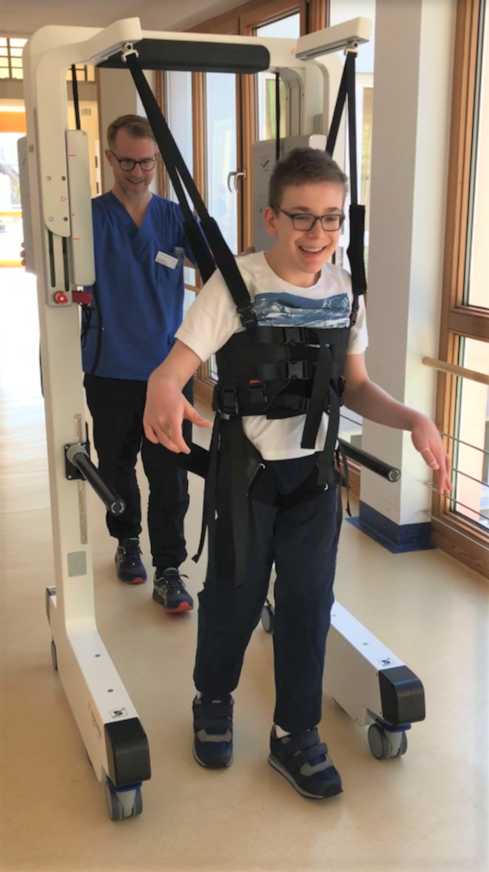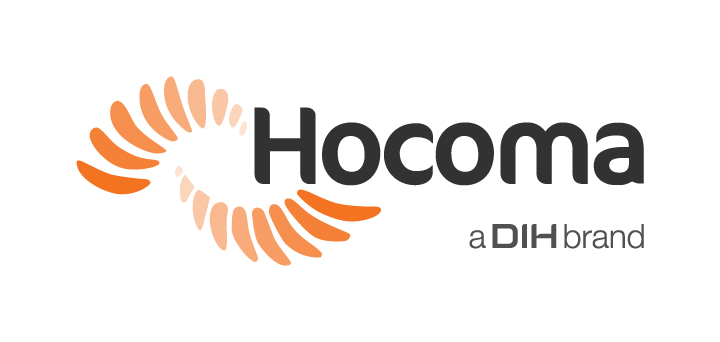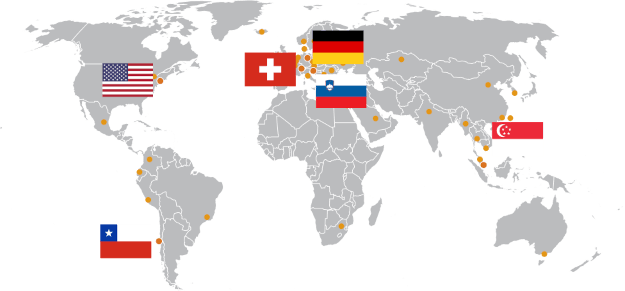September 1, 2020
Clinical Experience for a Safe and Intensive Gait Training With the Andago® at the Schömberg Children’s Hospital

Jan Schäfer, Physiotherapist
Schömberg Children’s Hospital, Germany
The Schömberg Children’s Hospital is a specialized neurological hospital in the northern Black Forest with over 60 beds. A large multidisciplinary team cares for infants, children, adolescents and young adults with a wide variety of neurological diseases. Here we would like to share our experience with using the Andago® in a pediatric patient population.
Patient Group
We care for, treat and rehabilitate children, adolescents and young adults with early onset brain damage of all degrees of severity or lesions acquired later, such as those caused by an accident, patients with movement disorders and a wide variety of other neurological and metabolic disorders. Parents and relatives are closely involved and thoroughly instructed throughout the therapy process.
Cooperation Partners
There is a close exchange with institutions such as pediatric acute clinics, SPCs (social pediatric centers), neuropediatric and orthopedic clinics as well as pediatricians, therapists, schools and funding agencies.
Patient Stay
Patients have a very variable length of stay from a few days/weeks to several months.
What Are Therapeutic Contents in the Children’s Hospital Schömberg?
Physiotherapeutic contents are both of a rehabilitative nature depending on the severity of the disability, such as a targeted load build-up and the (re)acquisition of gross motor skills (e.g. the ability to stand or walk after a complex neuro-orthopaedic hip joint reconstruction), but also gait training (with the help of video-supported gait analysis) and advice on or optimisation of aids. In addition, the use of other movement therapy equipment such as vibration therapy with the Gallileo; assisted, guided step initiation in the movement trainer “Innowalk” and repetitive movement assistively or actively lying and sitting in the movement therapy device “MOTOmed”. Therapeutically supported treadmill training is offered with or without body weight support.
Since When Do We Work With the Andago®?
Since July 2018 the Andago has been an integral part of the physiotherapy work at our clinic. The intensity of use of the Andago is strongly dependent on the needs of the patients residing at the clinic at a given time. After the Andago training provided by Hocoma, we disseminate our knowledge and experience through regular internal training sessions within our physiotherapy teams.
Who Receives Andago® Training and What Changes Do We Observe?
The Andago is used in our children’s clinic by small and large patients who are in the mobilisation process, between standing and verticalisation through use of a device and training gait initiation. In our experience, Possible training targets include gradually learning to bear body weight taking into account potential pain experienced by the patients since the Andago facilitates precise and dynamic body weight support. This can be done either as a stimulant (in a few therapy units), acting as a bridge to eventually allow the patient to switch to another aid, or as a tool to continuously increase endurance while walking. With the Andago, considerably less “hands-on” is required and the patient experiences self-determination and self-effectiveness. In contrast, we therapists can safely accompany patients while taking some distance allowing us to observe and interpret the patients’ movements and mobility with the help of the Andago. In cases where the combination of patient weight and size is an issue combined with the therapy goal of overground gait training, treadmill training with body weight support is not an option. In these cases, the Andago is used to support therapists (providing physical relief) when training overground step initiation. If we observe that children/young people want to walk without being guided directly by the therapist, we try the Andago as well. Often the Andago is used to bridge the gap between a patient’s current ability and the ability to start to use a suitable walking aid. Experiencing the Andago can strengthen children, teenagers and young adults with the motto “I can make a difference myself”. This is also because walking independently with the help from the Andago offers self-confidence and encourages children to try things such as free walking (e.g. secured in the Andago without holding on to hand rails). Even if, in individual cases, free walking is not a real everyday goal, experiencing safe free walking in the Andago can be an important step.
With Which Intensity and Modification Does the Training With the Andago® Take Place?
After positive testing, we offer the training in intensive intervals over 2-3 weeks up to 5 times a week for a duration of 15-30 minutes. The individual therapy goals are taken into account. In doing so, body weight support parameters are adjusted, and larger or smaller parcours are designed. Parcours are also designed to train taking curves and changes of direction. We use small accessories such as steps or balance boards to increase training versatility. The Andago offers three speeds, wherein the patients can experience more or less support from the Andago at these different walking speeds. The dynamic body weight support can be adjusted to provide targeted loading or unloading. We train upright gait by modifying trunk orientation using e.g. varying grips on the handrails or the harness. The patients explore corridors and rooms around the clinic, the distance covered displayed at the end of the training provides direct feedback to the patient on possible “personal distance records” and improvements in endurance. The quality of walking can also be focused on during Andago training, e.g. when testing a new orthosis concept in order to be able to respond more specifically to certain phases of gait.
Summary
In summary, it should be emphasized that the Andago, as part of the physiotherapeutic work in the clinical setting, is an absolute enrichment for both the younger and older pediatric patients as well as the physiotherapists themselves. It enables new treatment approaches in both learning and experiencing gait.
This clinical experience report is meant to serve as an example of how the Andago is integrated into one particular rehabilitation centre. It is not necessarily a standard recommendation from Hocoma.



